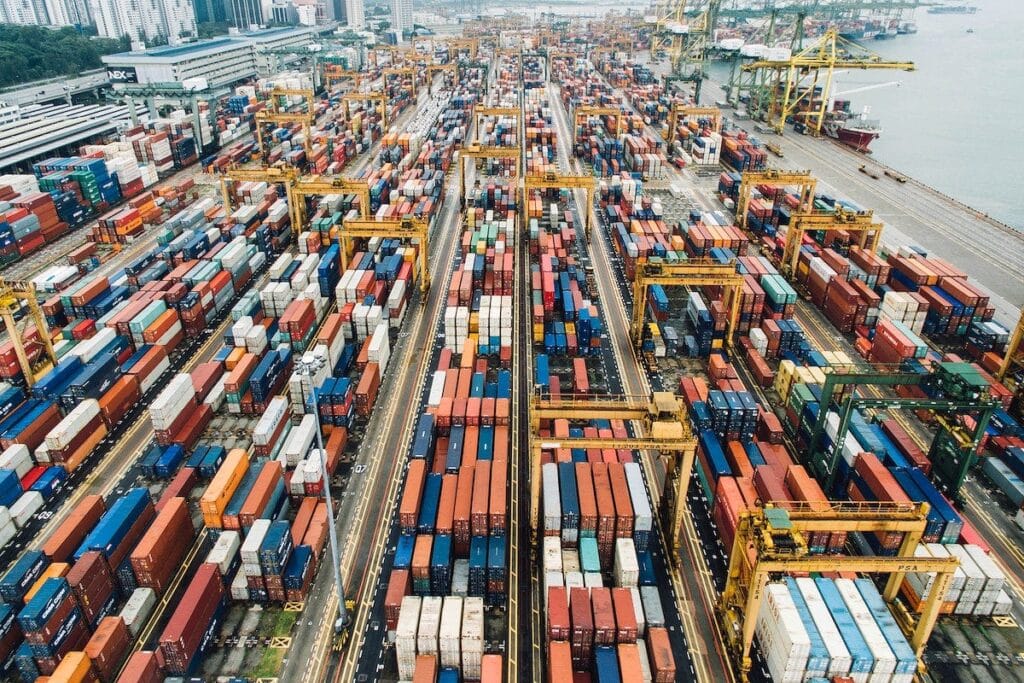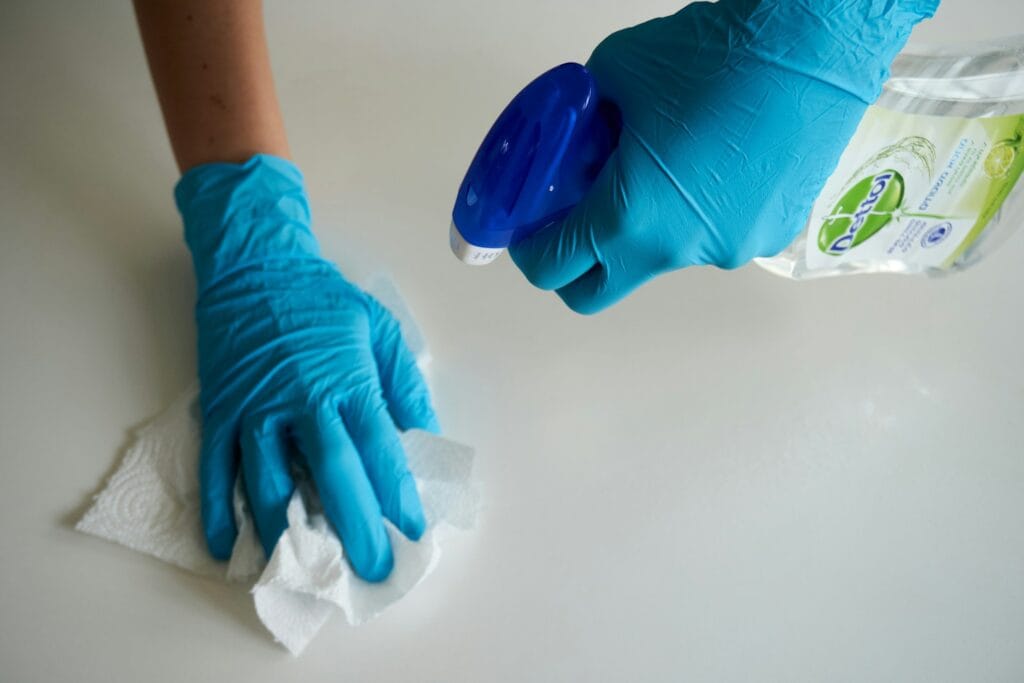
Marketing Tactics: How to Promote Workwear in Africa, Middle East & Latin America
Walk through the bustling streets of Lagos, the industrial zones of Riyadh, or the logistics hubs of São Paulo—and you’ll quickly see something in common: people working hard in uniforms that tell stories. Whether it’s a safety vest on a construction site, a pair of boots in a warehouse, or a branded jacket in an oil field, workwear is both protection and identity.
But here’s the challenge: in emerging markets, good workwear doesn’t sell itself.
Distributors and agents face one key question — “How do I make people trust, remember, and buy my brand?”
This guide dives into the real-world marketing tactics that work across Africa, the Middle East, and Latin America — focusing on low-cost, high-impact strategies that actually convert: from WhatsApp catalogues and Facebook ads to local exhibitions and influencer-style product demos.
To promote workwear in Africa, the Middle East, and Latin America, focus on practical channels where business happens — WhatsApp, Facebook, trade shows, and local KOLs. Combine on-site demos with short videos, local-language posts, and word-of-mouth marketing. Success depends on local trust, fast replies, and real photos, not fancy slogans.
Why Workwear Marketing Is Different in Emerging Markets
Unlike fashion or electronics, workwear sells through trust, relationships, and visibility.
Buyers—whether they’re contractors, factory owners, or wholesalers—want proof, not promises.
Here’s what makes this sector unique:
-
Purchase decisions happen offline.
In many developing regions, business owners still prefer to meet in person or see samples before paying. Online visibility helps, but deals close over coffee, warehouse visits, or WhatsApp calls. -
Workwear isn’t impulse-buying—it’s risk management.
Buyers see workwear as protection for their workers and reputation. They won’t switch brands easily unless they’re sure of your reliability. -
Trust beats advertising.
Flashy ads don’t work if customers don’t trust you. Testimonials, local partnerships, and physical presence are far more persuasive. -
Informal communication rules.
Forget fancy CRM systems. Most leads come from WhatsApp chats, voice notes, and personal introductions.
That’s why your marketing should feel personal, responsive, and grounded in real human relationships.
The Core Marketing Framework for Emerging Markets
Below is the proven “4-Channel Strategy” I’ve seen repeatedly work for distributors, traders, and agents across developing regions. Think of it as your marketing GPS.
| Channel | What It Does Best | Best Use Scenario | Cost Level |
|---|---|---|---|
| WhatsApp Marketing | Builds 1-to-1 relationships | Ideal for client follow-ups, price updates, and product catalogues | 💲 |
| Facebook / Meta Ads | Drives visibility and lead generation | Works well for local distributors targeting SME owners | 💲💲 |
| TikTok / Short Videos | Builds brand awareness | Perfect for visual demos and behind-the-scenes factory clips | 💲 |
| Exhibitions & Local Trade Shows | Creates trust and big orders | Best for launching new lines or meeting key buyers | 💲💲💲 |
💡 Pro tip: Combine online channels (for visibility) with offline ones (for relationship building).
For example: Use Facebook to attract leads → Talk to them on WhatsApp → Meet them at trade fairs.
Understanding the Buyer Mindset
Before diving into tactics, let’s get one thing clear:
In emerging markets, you’re not selling fabric—you’re selling reliability.
Buyers often ask:
- “Will you deliver on time?”
- “Can you guarantee the same quality in the next order?”
- “Are your certificates real?”
- “Can I trust your payment terms?”
Your marketing must answer these doubts before they even ask.
That’s why showing real images of your factory, workers, and packaging area often converts better than polished product renders.
A 15-second video of your team checking reflective strips before shipment builds more trust than a glossy catalog ever could.
Market Overview: Three Regions, Three Realities
Let’s take a look at how marketing psychology shifts across Africa, the Middle East, and Latin America.
| Region | Buyer Motivation | Preferred Communication | Top Performing Channels |
|---|---|---|---|
| Africa | Reliability, durability, fast delivery | WhatsApp, voice calls | WhatsApp, Facebook, trade fairs |
| Middle East | Professional image, certifications, service quality | Email + WhatsApp | LinkedIn, exhibitions, WhatsApp |
| Latin America | Price-performance balance, aesthetic value | Facebook Messenger, local calls | Facebook Ads, TikTok, in-person demos |
Each region values a slightly different mix:
- In Africa, relationships matter more than price.
- In the Middle East, reputation and certification drive decisions.
- In Latin America, storytelling and visual style make a huge impact.
Why Local Language and Authenticity Win Every Time
Many importers make a critical mistake: they run all ads and brochures in English.
But your buyer in Brazil or Algeria might scroll past because they simply don’t feel the message is for them.
Here’s what works better:
- Use Spanish, Portuguese, or Arabic in your ads.
- Include local dialect greetings (“¡Hola amigo!”, “As-salamu alaykum!”) in your WhatsApp replies.
- Localize prices — show USD, but also mention equivalents in local currencies (e.g., EGP, NGN, BRL).
You’re not just selling workwear—you’re connecting cultures.
Transition
So now that we understand the mindset, the markets, and the media —
it’s time to break down how to actually use these tools to get noticed, win trust, and grow orders step-by-step across Africa, the Middle East, and Latin America.
Next, we’ll dive deeper into real tactics, case studies, and templates that you can apply immediately — even with a small budget.
Proven Marketing Tactics for Workwear in Emerging Markets
After understanding the regional landscape and buyer psychology, we can now move from theory to practice.
This section outlines the real-world marketing playbook that distributors and trade agents have used successfully across Africa, the Middle East, and Latin America — tested under tough market conditions, with limited budgets, and often using only a phone and Wi-Fi connection.
1. WhatsApp Marketing: The Invisible Sales Engine
In most developing markets, WhatsApp is not just a chat app — it’s the entire business ecosystem.
People use it to showcase catalogues, negotiate prices, and even close deals.
According to 2024 data from Meta Business, over 70% of B2B transactions in Africa and Latin America begin with a WhatsApp message.
✅ What Works Best
- WhatsApp Catalogues: Create product collections with prices, sizes, and MOQ.
- Broadcast Lists: Send monthly updates on new arrivals or discount offers.
- Quick Replies: Prepare short, polite templates for common buyer questions.
- Status Posts: Treat your WhatsApp status as a mini billboard — post real shipment photos, customer testimonials, or behind-the-scenes clips.
🧰 Template: WhatsApp Catalogue Message Example
👋 Hi Ahmed, Here’s our latest range of high-visibility workwear available this month: 🦺 Reflective Jacket EN ISO 20471 💰 Price: $11.20 FOB Ningbo 📦 MOQ: 200 pcs 📸 [Photos Attached] We also support private logo printing and mixed sizes. Would you like me to send the full catalogue PDF?
💡 Pro Tip
Buyers don’t want to read long descriptions.
Use real photos, emojis, and quick numbers (price + MOQ + lead time).
Authenticity > aesthetics.
2. Facebook & Meta Ads: The Digital Billboard for Traders
While most Western marketers think Facebook is “outdated,” it’s still the #1 B2B and B2C marketing platform in emerging markets.
From Nairobi to Lima, construction site supervisors, procurement managers, and small shop owners scroll through Facebook during lunch breaks.
✅ Best Practices
- Target men aged 25–45 with interests like construction, oil & gas, PPE, logistics.
- Use before-and-after visuals: show a worker in regular clothes vs. in professional gear.
- Write ad captions in local languages (e.g., Spanish or Arabic).
- Use the Messenger “Click to WhatsApp” CTA — it shortens your sales funnel dramatically.
📈 Example Ad Caption
“Protect your team, improve your image.
Certified Workwear now available for construction and logistics companies.
💬 Message us for a free quotation on WhatsApp!”
💡 Pro Tip
Start with small budgets ($5–10/day).
Optimize for messages, not website clicks — because most deals close in chat, not on a webpage.
3. TikTok & Short Video Marketing: Visibility Through Authenticity
TikTok is exploding in developing regions.
But you don’t need to hire influencers — even a simple factory walkthrough or packaging video gets attention if it feels real.
🎬 Video Ideas That Work
- “How our reflective jackets are tested for durability”
- “From China to Lagos: how your workwear order ships”
- “3 mistakes to avoid when buying safety shoes”
🧩 Best Practices
- Keep videos under 30 seconds.
- Add subtitles in English + local language.
- Use hashtags like
#workwear,#PPE,#constructionlife,#oilgas.
💡 Pro Tip
In markets like Egypt or Brazil, people value seeing the human side of your business.
Show your team, your packaging area, and your QC process — it creates emotional trust faster than traditional ads.
4. Trade Shows & Local Exhibitions: Building Face-to-Face Trust
Even in the digital era, nothing beats shaking hands and showing real samples.
For B2B workwear sales, trade fairs remain one of the fastest ways to build credibility.
🌍 Top Regional Fairs
| Region | Event Name | Focus | Frequency |
|---|---|---|---|
| Africa | Securex Africa (Johannesburg) | PPE, Safety | Annual |
| Middle East | Intersec Dubai | Security, Workwear | Annual |
| Latin America | Expo Seguridad (Mexico) | Safety & Uniforms | Annual |
💬 Tips for Maximizing ROI
- Bring real samples, not just catalogues.
- Prepare multi-language brochures (English + Arabic + Spanish).
- Use QR codes that link directly to your WhatsApp Business number.
- Take photos with visitors and post on social media the same day — this builds social proof.
5. Influencer & Word-of-Mouth Marketing: Turning Workers into Advocates
In markets with limited formal media, local micro-influencers and real users can sell better than celebrity endorsements.
For example:
- A construction foreman who wears your vest daily and tags you on Facebook.
- A warehouse manager sharing a TikTok about how your gloves last longer.
These real-life endorsements resonate because they come from within the community.
✅ How to Encourage User Advocacy
- Offer small discounts for user photos or testimonials.
- Send samples to popular construction Facebook pages or safety gear influencers.
- Create a branded hashtag for workers to tag you.
🧱 Example: The “Real Worker Challenge”
Launch a campaign like:
“Show us your daily work outfit!
Tag us with #RealWorkwearHero and win a free safety jacket.”
6. Case Study: Egypt’s WhatsApp Catalogue Success
Context:
A small Egyptian distributor based in Alexandria imported mid-range reflective vests and safety shoes from China.
Problem:
They had no physical store and limited advertising budget.
Solution:
They built a WhatsApp Business catalogue with real photos of each item, price list, and delivery terms in Arabic. Then they promoted the catalogue through local Facebook groups for contractors and factory owners.
Result (in 6 months):
- 50+ repeat customers across 4 cities
- Monthly sales grew by 240%
- Their WhatsApp status views exceeded 2,000 per week
Key Lesson:
Simple, visual, and authentic marketing beats expensive ad campaigns.
7. Turning Trade Shows into Long-Term Marketing Assets
Most distributors attend trade shows, collect business cards, and forget them after a week.
Smart marketers turn those contacts into evergreen lead databases.
🧰 How to Do It
- Import all visitors’ data into WhatsApp or a CRM.
- Send personalized “thank you” messages post-event.
- Create a follow-up series:
- Week 1: Send product brochure
- Week 2: Share shipment photo
- Week 3: Offer small discounts for first order
- Post event photos with tags: “Meeting partners from Kenya 🇰🇪 and Peru 🇵🇪 at Intersec Dubai!”
This simple system builds momentum and trust even after the fair is over.
8. The Power of Consistency
Most agents give up too early.
They post for 2 weeks, then stop because “no one replied.”
But remember — in B2B, the sales cycle is long.
- Your 10th post gets attention because of your first 9.
- The buyer who ignored you today might message in 3 months when a new tender opens.
- Visibility + Credibility + Patience = Sales.
9. Practical Tools: Your Marketing Arsenal
Here are free or low-cost tools you can start using today to professionalize your marketing.
| Purpose | Tool | Use Case |
|---|---|---|
| Catalogue Design | Canva | Design product flyers and WhatsApp posts |
| Messaging Automation | WhatsApp Business | Auto-replies, labels, and broadcast lists |
| Video Editing | CapCut / InShot | Make short product or testimonial videos |
| Ad Management | Meta Business Suite | Run and track Facebook/Instagram ads |
| Translation | DeepL / Google Translate | Convert posts to Arabic, Spanish, Portuguese |
Transition
You now have a tactical blueprint for promoting workwear across Africa, the Middle East, and Latin America — even if you’re starting small.
But how do you make sure these efforts actually turn into sales and not just likes or chats?
In the final section, we’ll show you how to measure, optimize, and scale your marketing results — so every message, ad, and post contributes to real growth.
Step 3: Measuring Results and Scaling Your Workwear Marketing Campaigns
Marketing is only powerful when it turns attention into measurable results — leads, orders, partnerships, and brand recognition.
In this final step, we’ll cover how to track performance, optimize campaigns, and scale sustainably — using practical frameworks and real examples from the workwear industry across Africa, the Middle East, and Latin America.
1. Define Clear, Actionable Marketing KPIs
Before spending another dollar or another hour, you need to define what success looks like.
For workwear distributors, the most important metrics are simple but powerful:
| Category | KPI | What It Means |
|---|---|---|
| Engagement | WhatsApp responses / Facebook messages | Indicates interest from potential buyers |
| Lead Generation | Number of qualified B2B contacts | How many real buyers you’re adding weekly |
| Conversion | % of inquiries that turn into orders | Direct measure of sales effectiveness |
| Retention | Repeat order rate | Whether customers trust you enough to reorder |
| Cost Efficiency | Cost per lead (CPL) | Budget efficiency across campaigns |
💡 Pro Tip:
For new distributors, start with two KPIs:
- Inquiries per week
- Orders per month
Once you’re stable, add conversion and ROI metrics.
2. Using WhatsApp and Facebook Analytics for Real Insights
You don’t need complex software to measure success.
Both WhatsApp Business and Meta Business Suite give you free data tools:
📊 WhatsApp Metrics to Track
- Number of new chats per week
- Average response time
- Message read rate
- Catalogue views
- Top-performing broadcast messages
📈 Facebook & Instagram Metrics
- Post reach and engagement
- Click-to-WhatsApp conversions
- Ad cost per message
- Top-performing countries, age groups, or job titles
Example:
A distributor in Ghana discovered that posts in local Twi language generated 3x higher engagement — and 50% more qualified leads.
Lesson: localization multiplies visibility.
3. The Marketing Funnel: From Chat to Contract
Workwear B2B marketing follows a trust-driven funnel — buyers rarely purchase on first contact.
Your goal is to move them step by step from curiosity → confidence → contract.
🔻 The Workwear Marketing Funnel
- Awareness – TikTok videos, Facebook posts, WhatsApp statuses
- Interest – Catalogue downloads, ad clicks, website visits
- Consideration – Sample requests, price negotiations
- Decision – Trial order or distribution deal
- Loyalty – Reorders, referrals, testimonials
💡 Tip:
Keep track of where each lead is in your funnel using labels in WhatsApp Business (e.g., “New Lead”, “Sample Sent”, “Negotiation”, “Order Confirmed”).
4. Calculate ROI (Return on Investment)
Even with small budgets, you can calculate ROI using this simple formula:
ROI = (Total Sales from Campaign – Campaign Cost) ÷ Campaign Cost × 100%
Example:
You spent $300 on Facebook ads in Nigeria and gained 6 new clients.
Each client bought $500 worth of workwear.
ROI = (6×500 – 300) ÷ 300 = 900%
That’s a 9x return on investment.
This approach helps you identify which channels deserve more budget — and which to drop.
5. Case Study: Scaling from Local Market to Regional Brand (Kenya)
Company:
A small Kenyan distributor specializing in reflective vests and safety boots.
Challenge:
They relied only on word-of-mouth sales in Nairobi.
Growth was slow and limited to one region.
Strategy Implemented:
- Launched a Facebook page in Swahili + English.
- Used “Click to WhatsApp” ads targeting nearby cities (Mombasa, Kisumu).
- Shared real worker videos showing product durability.
- Offered a 5% referral discount for customers who shared the catalogue.
Results (in 9 months):
- Sales grew by 310%
- Expanded to 3 regional cities
- 70% of new buyers came through WhatsApp referrals
Key Takeaway:
You don’t need a massive ad budget — just consistent visibility and authentic content.
6. Measuring Channel Effectiveness: Comparison Table
| Channel | Reach | Cost | Conversion Rate | Best For |
|---|---|---|---|---|
| Medium | Low | 🔥 High | B2B buyers & repeat orders | |
| Facebook Ads | High | Medium | Medium | Awareness & lead generation |
| TikTok | High | Low | Low–Medium | Brand visibility & storytelling |
| Trade Fairs | Low | High | 🔥 Very High | Big buyers, long-term partnerships |
| Email / Website | Low | Low | Low | Supplementary credibility |
💡 Tip:
Start with WhatsApp + Facebook combo — it gives the best return for distributors in developing regions.
7. CRM & Data Management for Growing Distributors
Once you start managing dozens of buyers, you need a simple system to organize leads.
🧰 Recommended Tools
| Tool | Purpose | Notes |
|---|---|---|
| WhatsApp Labels | Track order stages | Free and native to WhatsApp Business |
| Google Sheets | Customer database | Easy sharing with team |
| HubSpot CRM (Free plan) | Manage pipeline | Email + call integration |
| Notion / Trello | Task tracking | For small distributor teams |
🧩 Sample CRM Columns
| Buyer Name | Country | Product Interested | Status | Last Contact | Notes |
|---|---|---|---|---|---|
| Ahmed | Egypt | Reflective vests | Sample sent | Sep 2025 | Needs bulk quote |
| Paulo | Brazil | Safety shoes | Negotiation | Oct 2025 | Wants exclusive deal |
💡 Pro Tip:
Update data daily — relationships fade fast in emerging markets if you lose touch.
8. How to Scale Without Losing Authenticity
As your brand grows, buyers expect the same personal service that made you successful early on.
Here’s how to stay human while expanding:
- Use personalized broadcast lists instead of bulk messages.
- Keep local-language communication for each market (e.g., Spanish for Latin America, Arabic for MENA).
- Delegate after-sales service to local reps or resellers.
- Share “customer spotlight” stories monthly to keep engagement genuine.
Remember: In developing markets, people buy from people, not logos.
9. Advanced Tactics: Retargeting & Lookalike Audiences
Once you’ve built enough data from Facebook or WhatsApp interactions, you can scale smartly through retargeting.
🔁 Retargeting Strategy
- Target users who interacted with your ads but didn’t message you.
- Show them short testimonials, pricing graphics, or delivery guarantee messages.
- Offer a small discount to re-engage cold leads.
🎯 Lookalike Audiences
Use Facebook’s algorithm to find new users similar to your best buyers.
For example:
You had success with logistics companies in Lagos → Facebook can find similar companies in Accra or Abidjan automatically.
This multiplies your reach without increasing risk.
10. The Reporting Template: Monthly Marketing Summary
Below is a simple monthly reporting template you can adapt.
| Metric | Target | Actual | Status | Notes / Actions |
|---|---|---|---|---|
| Inquiries | 120 | 105 | 🔸 Slightly Below | Increase Facebook post frequency |
| Orders | 15 | 18 | ✅ Above Target | More follow-ups after fairs |
| Ad Spend | $400 | $390 | ✅ On Track | |
| CPL (Cost per Lead) | $3.50 | $3.10 | ✅ Efficient | Test new creatives |
| Repeat Orders | 6 | 8 | ✅ | High retention from WhatsApp buyers |
11. Practical Toolkit: Track and Optimize
| Goal | Tool / Template | Format | How to Use |
|---|---|---|---|
| Monitor daily marketing KPIs | Marketing Dashboard Template | Excel / Google Sheets | Update weekly |
| Automate post scheduling | Meta Business Suite | Web / Mobile | Plan content 1 month ahead |
| Track WhatsApp conversions | Chat Label Tracker | Spreadsheet | Add lead source & order value |
| Measure ROI | ROI Calculator | Excel | Compare ad spend vs. sales |
12. Conclusion: Turning Visibility into Sustainable Growth
Marketing workwear in emerging markets is not about fancy visuals or viral videos.
It’s about credibility, consistency, and connection.
If you focus on:
- Showing your products in action
- Communicating clearly in local languages
- Using WhatsApp and Facebook with purpose
- Measuring results weekly
Then every marketing dollar will translate into something much bigger — trust.
And in the world of B2B workwear, trust is the real currency.
“When you stop chasing quick sales and start building real relationships, you stop selling — and start leading the market.”
🧰 Downloadable Template (For Your Marketing Team)
📊 Marketing Performance Dashboard – Google Sheet Template
Track daily messages, inquiries, conversions, and ROI — ideal for small and mid-sized distributors operating across multiple countries.
🌍 Final Takeaway
Whether you’re marketing reflective vests in Kenya, safety boots in Saudi Arabia, or overalls in Brazil — the tools and tactics are the same.
The difference lies in execution and authentic communication.
Your success doesn’t depend on budget — it depends on how well you connect, engage, and follow up.
Email: [email protected]
🌐 Visit www.workwearsolutions.net
Zion Zhang
Recent Posts
 Branding Strategies for Workwear: Competing Beyond Price2025年10月12日In many emerging markets — from Africa to Latin America to […]
Branding Strategies for Workwear: Competing Beyond Price2025年10月12日In many emerging markets — from Africa to Latin America to […] How to Build a Local Distribution Network That Works2025年10月10日In emerging markets across Africa, the Middle East, Central […]
How to Build a Local Distribution Network That Works2025年10月10日In emerging markets across Africa, the Middle East, Central […] Choosing the Right Sales Channels for Workwear in Emerging Markets2025年10月10日In fast-growing markets across Africa, the Middle East, […]
Choosing the Right Sales Channels for Workwear in Emerging Markets2025年10月10日In fast-growing markets across Africa, the Middle East, […] Building Long-Term Supplier Relationships: From First Order to Partnership2025年10月10日In the world of global workwear trade, many new importers […]
Building Long-Term Supplier Relationships: From First Order to Partnership2025年10月10日In the world of global workwear trade, many new importers […] Costing & Profit Margins: Calculating the Real Numbers2025年10月9日When importing workwear or PPE from China, the biggest […]
Costing & Profit Margins: Calculating the Real Numbers2025年10月9日When importing workwear or PPE from China, the biggest […] Logistics & Payment Methods: Reducing Risk in Cross-Border Trade2025年10月9日If you’ve ever imported workwear or PPE from China, you […]
Logistics & Payment Methods: Reducing Risk in Cross-Border Trade2025年10月9日If you’ve ever imported workwear or PPE from China, you […]
CONTACT US
- Feel free to contact us any time. We will get back to you as soon as we can!
- +86-17303331701
